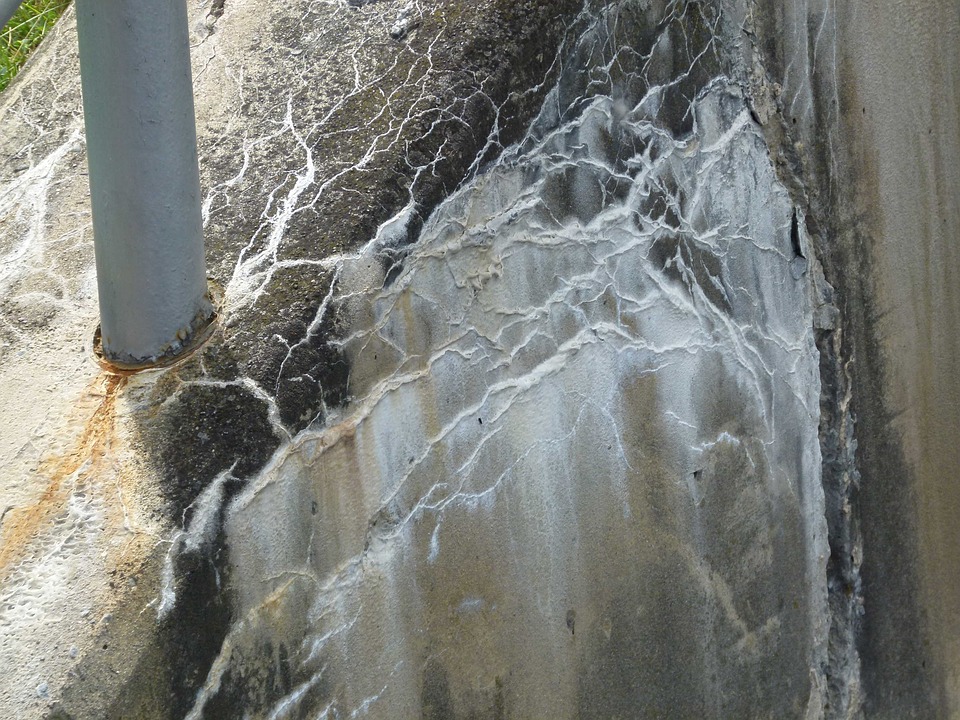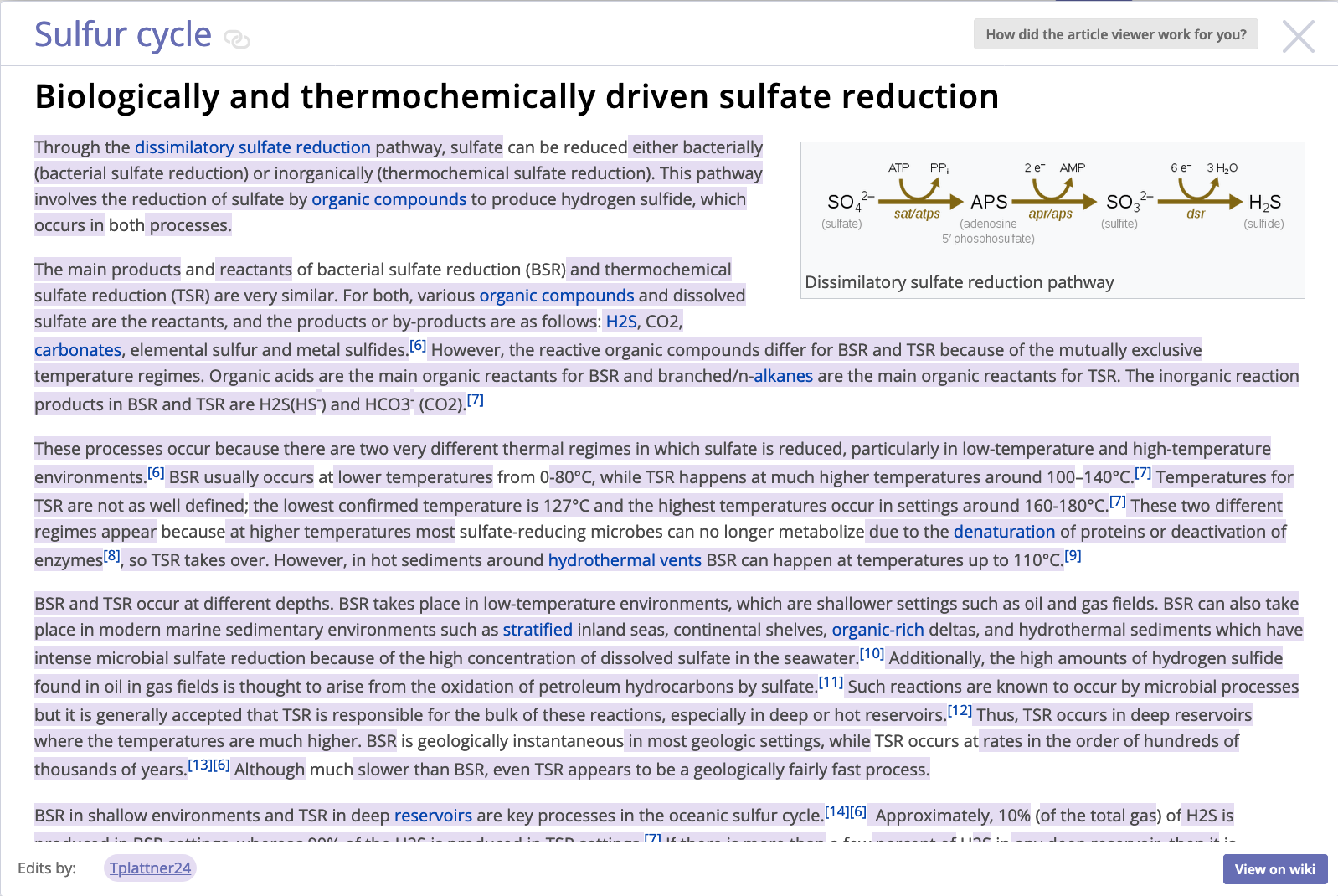“I’ve improved my student reviews from it.”
Dr. Jennifer Glass’ environmental geochemistry course at Georgia Tech last fall covered “how chemical, biological, and geological processes control the distribution of chemical elements on Earth and the solar system.” Through a semester-long Wikipedia writing assignment, she wanted students to gain experience “in scientific writing on notable topics in environmental geochemistry of high interest to the public.”
This was her third term in a row using our assignment management tools and trainings to guide students through the task. After that first term in Fall 2018, she was thrilled to see how the assignment both affected students and the public resource that is Wikipedia. “Everyone agrees it’s way more interesting than a term paper,” she shared with us back in early 2019. “I think I’ll never go back to term papers – and instead always do something interactive like this.”

Image by Daina Krumins, CC BY-SA 4.0 via Wikimedia Commons.
One student from this most recent fall term improved Wikipedia’s coverage of the chemistry process called leaching, a naturally occurring process where a solute is extracted using a solvent. Although the page was created in 2008, it has only seen a few updates every year until this student came in overhauled the article. They effectively rewrote the whole article (check out the Authorship Highlighting tool on the Dashboard to see their contributions), including what leaching processes look like in soil and for fly ash. The page now also has a summary of laboratory tests used to measure for each type of leaching process. The page gets about 240 views every day and has received more than 23,000 visits since the student improved it! They also uploaded a freely licensed photo to the page to illustrate leaching occurring in a cement wall due to natural weathering events.
Another student expanded a section of the page about sulfur cycles, the “processes by which sulfur moves between rocks, waterways and living systems.” The page receives about 340 pageviews every day and has been read 35,000 times since the student added this new section of well-referenced work.

Dr. Glass recently spoke at Georgia Tech’s Spring 2020 Teaching with Technology Spotlight about the power of the assignment (see the full talk recorded here). She shares how to incorporate the assignment into her class, what learning objectives it achieves, and student reactions.
“I was excited to do it because I first learned how to edit Wikipedia myself at a conference five years ago,” she explained. She had seen warnings on Wikipedia pages before this (like the “reference needed” tag), but wasn’t familiar with how the site’s content was actually curated.
“Before this conference, I thought that kind of warning was for an official editor of Wikipedia to fix, when in fact, no, that’s the beauty of Wikipedia. It’s this big community out there that volunteers their time. And I realized, along with a lot of other professors, that I could use this in my class. And maybe students would like it a lot more than the typical project of a term paper that only I read.”
“I liked the assignment myself in the beginning because it’s for the public good. It’s getting information out. It’s taking the information from these specialized journals that only we, at universities, have easy access to because our institute pays the very high subscription fees. Most people can’t get access to that peer review information, so how do we get this out to the broader community that’s interested?”
Already, freeing up knowledge that’s siloed inside academia is a powerful motivator for many of the instructors we work with. But there’s another piece that is almost more compelling—students really like it.
“Students can take greater ownership of their work,” Dr. Glass continued. “And I’ve learned through my experience that students are much more engaged with the material, take much more ownership, and feel much more empowered when they know that the information is gonna end up in the public domain. It’s going to be seen by the world. In the beginning, it’s kind of scary for them. They’ve heard bad things about Wikipedia in high school, often, and they also are nervous about writing something that is going to end up being seen by the entire world. But when they go through the whole semester-long process, by the end of it, 95% of them really like the experience and feel empowered. I’ve seen multiple people put it on their resumes. It really shows that they feel like they got a real life experience out of this that is going to help them in the real world. And I think it will.”
“If you can do more writing in your classes, or if you want to, I really feel that students get a lot of great writing experience from this. And it teaches them about ethics and plagiarism and bias and how to find sources.”
Plus, she added, “I’ve improved my Course Instructor Opinion Survey (CIOS) scores from it.” That’s not a bad outcome, either!
To incorporate a Wikipedia writing assignment into an upcoming course, visit teach.wikiedu.org for access to free resources and assignment templates.
To read more about Dr. Glass’ past course, see our blog post after her first term teaching. To watch Dr. Glass’ full talk, click here.

Really clear understandable article about the process and the subject matter.
I am of interest using wiki as one of the tools in teaching research writing ..thank you so much for encouraging us to use wiki without doubting its content.